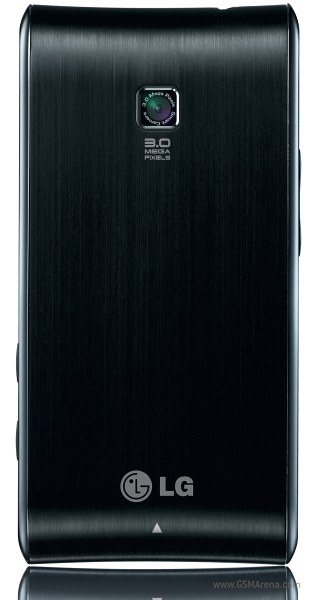
Overview of the LG GT540 Optimus
The LG GT540 Optimus, launched in early 2010, was part of the Android smartphone revolution, marking a significant step for LG in the smartphone arena. This device was designed to offer a compact and affordable option for users looking to experience Android without breaking the bank.
Design and Build
The GT540 Optimus features a sleek and compact design, measuring 109 x 54.5 x 12.7 mm and weighing 115.5 grams. This made it relatively lightweight and easy to handle. The phone came with a Mini-SIM slot and was available in three colors: Black, White, and Pink. Its build quality was typical for that era, with a plastic casing that was sturdy enough for everyday use.
Display
Equipped with a 3.0-inch TFT resistive touchscreen, the display offered a resolution of 320 x 480 pixels. This provided a pixel density of approximately 192 ppi, which was decent for its time. Although the touchscreen was resistive rather than capacitive, which meant it required a bit more pressure to register inputs, it still supported 256K colors, displaying visuals clearly and vibrantly for typical use cases in 2010.
Performance and Software
Under the hood, the GT540 was powered by a 600 MHz processor and initially ran on Android 1.6 (Donut), upgradeable to Android 2.1 (Eclair). This setup allowed for basic multitasking and app usage. While it wasn't built for power users, it adequately handled essential Android applications and offered users a taste of the Android ecosystem at a time when smartphones were beginning to gain traction.
Memory and Storage
With 156MB of RAM and 139MB of internal storage, the device was not a powerhouse by any means. However, it did support microSDHC cards, allowing users to expand storage significantly, which was a necessity given the limited internal capacity for apps and media.
Camera Capabilities
The main camera on the LG GT540 Optimus was a 3.15 MP shooter, capable of autofocus and video recording at 480p at 17fps. While it lacked modern features such as flash or a secondary front-facing camera, it was suitable for casual photography typical of early smartphone cameras and provided adequate performance for users looking to capture everyday moments.
Audio and Connectivity
The device boasted a loudspeaker and a 3.5mm jack, key features for media consumption at the time. In terms of connectivity, it supported Wi-Fi 802.11 b/g, Bluetooth 2.1 with A2DP, GPS support including A-GPS, and microUSB for data transfer and charging. The inclusion of a stereo FM radio with RDS further complemented its audio capabilities, providing users with a traditional music listening experience.
Battery Life
Powered by a removable Li-Ion 1500 mAh battery, the LG GT540 Optimus offered ample standby time—up to 500 hours on both 2G and 3G networks. In terms of talk time, users could expect up to 5 hours 30 minutes on a 2G network and 7 hours 20 minutes on a 3G network, making it reliable for an average day’s use without frequent recharges.
Sensors and Additional Features
The device came with an accelerometer, which enabled features like automatic screen rotation. The browser supported HTML, but without flash or the capabilities of modern web browsers, it offered basic web browsing experiences. Despite lacking many modern sensor technologies, the included features were adequate for its time.
Market Position and Conclusion
During its launch, the LG GT540 Optimus was priced at approximately 70 EUR, placing it in the budget category, targeting users seeking entry into the smartphone market without a significant investment. It provided a balance of essential features and performance for its price, making it an accessible option for many consumers. Despite being discontinued, the GT540 Optimus remains a significant piece in LG's evolution in smartphone design and technology.
Main Features of LG GT540 Optimus
- Network Technology: GSM / HSPA
- HSPA 7.2/0.384 Mbps Speed
- Lightweight Body: 115.5 g (4.06 oz)
- 3.0 inches TFT resistive touchscreen with 256K colors
- Resolution of 320 x 480 pixels (~192 ppi density)
- Upgradable Android OS from 1.6 (Donut) to 2.1 (Eclair)
- Removable Li-Ion 1500 mAh battery
- Expandable memory via microSDHC card slot
- Main Camera: 3.15 MP with autofocus
- Supports Wi-Fi 802.11 b/g
- Bluetooth 2.1, A2DP
- GPS with A-GPS support
- Stereo FM radio with RDS
- 3.5mm audio jack
- Available in multiple colors: Black, White, Pink
LG GT540 Optimus Drawbacks
- Discontinued device, no longer officially supported.
- Operates on outdated Android 1.6 (Donut), upgradeable only to 2.1 (Eclair).
- Limited internal memory of 139MB with 156MB RAM.
- TFT resistive touchscreen with only 256K colors and effective display quality is lower at 65K colors.
- Relatively low screen-to-body ratio of approximately 45.1%.
- Low screen resolution of 320 x 480 pixels (~192 ppi density).
- Single 3.15 MP rear camera without a front-facing camera.
- Video recording capabilities are limited to 480p at just 17fps.
- Low processing power with a 600 MHz CPU.
- No advanced sensors beyond a basic accelerometer.





























View Also
More Phones
All Rights Reserved +14267 Phones © Mobilawy 2025

























